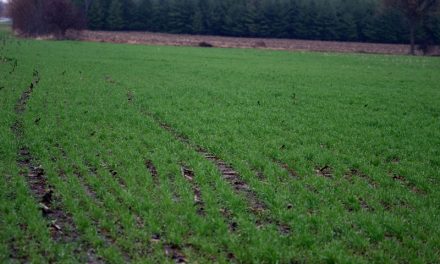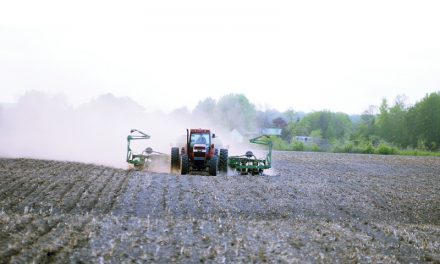Table 1. Length of row representing 1/1,000 of an acre at different row widths. Source: Corn and Soybean Field Guide, IPM 1. Courtesy Photo
By Kelsey Banks, Agronomist
Kelseyabanks3@gmail.com
This planting season was… extreme. It was a ‘get up and go’ type of wet spring when the soil was dry enough to plant. Now, as the crops are emerging, it is important to evaluate your plant stands.
Counting plant stands is important for future planning decisions and is done by all farmers, both experienced and first time growers, to determine how close their emerged plant stand is to the target population that was set when seed was ordered merely weeks ago. This process can also help alert growers and agronomists to potential planting, insect, disease, and/or environmental issues that may arise.
There are a few ways to count and evaluate stand counts. Iowa State University states the following protocols for counting plant stands:
Traditional Stand Count Method
- Measure out 1/1000th of an acre based on your row width. For example, with a 30-inch row spacing, measure out a length of 17 feet, 5 inches.
- Count the number of live plants in the measured area.
- Repeat this process multiple times across the field to provide a more accurate estimate of the number of plants per acre.
- Average the counts and multiply the average number of plants by 1,000 to obtain the plant population per acre.
- When taking stand counts, randomly select these locations and do not intentionally avoid areas that have missing plants or gaps. Try to avoid selecting rows representing the same planter row unit. If one count does not seem to fit the other counts, keep that count separate and make a note of that area’s location in the field. In addition, look at emergence uniformity (differences in crop stages), plant spacing, and seedling vigour (Table 1).
Alternative Stand Count Methods
It is not uncommon to see 20-inch, 15-inch, 10-inch, or sometimes even 7.5-inch row spacing soybean in Ontario. Taking stand counts using the traditional method above can be arduous if soybeans are planted in narrow rows, so an alternative method may be more conducive to quickly getting stand count estimates.
Counting plants per foot of row
One alternative is to estimate the total plant stand by counting soybeans in an individual foot of row using Table 2. Like other methods, multiple transects are necessary to get a representative estimate of the stand across a field. These counts can be done more quickly than measuring 1/1,000 of an acre, but it may require more counts if stands are particularly uneven. It is recommended to count the number of soybeans in three to five feet of the row to get an estimate of beans per foot. This approach minimizes bias to avoid areas with poor plant spacing, large gaps or thin plant populations (see Table 2).
Hula Hoop Method
Another alternative method to take stand counts uses a hula hoop.
To use this method, toss a hula hoop to arbitrarily select an area for a stand count. Count the number of plants inside the hula hoop and multiply the number of plants by a multiplication factor to estimate the number of plants per acre (Table 3).
If a hula hoop does not have the exact diameter of those listed in the table below, determine the estimated stand by using the equation [Population = Plants Counted / (3.14 * hoop radius * hoop radius / 43,560)].
While counting plant stands, it is important to also focus on the health of the plants. Seed rots and seedling blights, herbicide injury, insect issues or planter issues may be in the stand and it is important to note these issues so the grower and their agronomist can develop a plan to grow a healthy crop.
If you need assistance with your plant stand counts, please contact your local agronomist.













